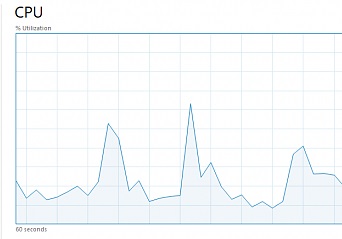You’re likely here because you’re wondering how to stop CPU throttling or trying to deal with and an overheated gaming system. It’s a good thing you’re here as throttling is a serious problem. Luckily, this article will teach you how to stop CPU throttling by underclocking and undervolting your CPU. Here’s what you need to know:
How to Fix CPU Throttling?
We can fix CPU throttling by underclocking or undervolting the CPU. Underclocking is a procedure that involves reducing the clock speed (number of cycles per second) of your CPU. A high clock speed will be executing many CPU or GPU instructions per second. Undervolting means to decrease the voltage consumption of your CPU. Now, your computer will consume voltage to carry out the basic functionalities, but we can still lower it.
- Underclocking = decrease clock speed
- Undervolting = decrease voltage

The Benefits of Undervolting and Underclocking CPU/GPU
Underclocking and undervolting is the best way to stop CPU throttling. But doing this has plenty of benefits that keep your laptop or computer in a healthy state. In fact, some manufacturers even underclock and undervolt hardware components as a rule.
Reduced Heat and Power Consumption
The first benefit to undervolting or underclocking your CPU is to negate the affects of thermal throttling and overheating. You can click here to learn about the optimum CPU/GPU temperature.
We have to reduce high temperatures to stop damage to you CPU and also your hardware. In fact, heat can cause problems through your whole device. Fortunately, most modern laptops tent to have their CPU/GPU already underclocked as an manufacturing standard.
You’ll likely need to use this technique if you have a laptop, especially if it is an older model. This is because laptops have sub-par fans and small chassis that cannot handle a fully-powered GPU.
Underclocking and undervolting can work to stabilize the laptop temperature which allow your fans to take a much-needed breather. It means the GPU and CPU don’t have to work as hard as the overall power consumption is decreased.
The scary thing is that after a certain threshold, the CPU can no longer handle the heat, so will throttle as a result. Your CPU does this to maintain heat levels. However, this can cause unwanted problem. A good example is during gaming when a CPU/GPU throttle can cause a huge FPS drop, which can spoil your gaming experience.
Improved Hardware Health
As well as being damaging to your CPU/GPU, high temperatures will cause damage to your hardware. Even the most robust pieces of hardware have a temperature limit. Your laptop will typically shut down if it overheats. However, there is a risk that it will never start-up again .
Your GPU can’t withstand high temperatures for long periods of time. You will effectively reduce the lifespan. Worst case scenario your desktop or laptop might unexpectedly shut down and never boot up. Underclocking will limit excess power consumption, therefore preventing your laptop or PC from overheating.
The Best Software for Fixing CPU Throttling
So we have established that underclocking and undervolting is the best way to fix and disable CPU throttling, but which software can we use? The most commonly recommended CPU fixing software is MSI Afterburner. This is a graphics card overclocking solution that provides complete control. Don’t worry, the solution is free and is compatible with all card types.
Is it Safe to Undervolt or Underclock CPU?
Yes, but it must be done correctly. For example, you may accidently go overboard by underclocking and undervolting too much. This will cause problems because your CPU/GPU requires a certain amount of voltage to run. An incorrect job can lead to an un-functioning CPU that doesn’t work like it should do.
People are advised to slowly decrease the voltage in small increments to find the sweet spot. You can use one of the throttling software on the market, like the MSI Afterburner highlighted above.
Conclusion
If your GPU/CPU is running at a high temperature, you have reason to be concerned. There is an optimum CPU temperature, and not abiding to that temperature can cause issues. Underclocking and overclocking your CPU/GPU can provide a solution by allowing for an improved battery life, smoother computer performance, and lower temperature. Other ways to fix CPU throttling are to apply thermal paste or using a cooling pad.